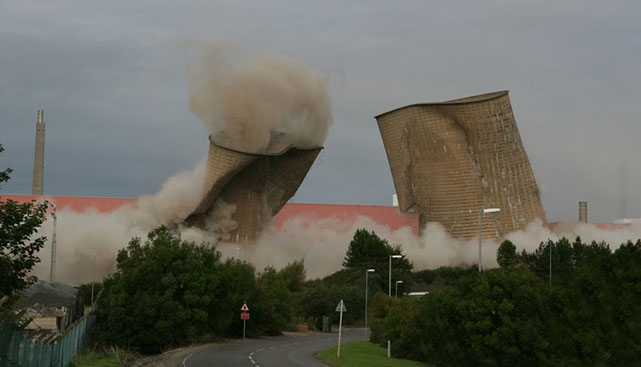If you want a job for life, go into the nuclear industry – not building power plants, but taking them down and making them safe, along with highly-radioactive spent fuel and other hazardous waste involved.
The market for decommissioning nuclear sites is unbelievably large. Sixteen nations in Europe alone face a €253 billion waste bill, and the continent has only just begun to tackle the problem.
Among the many difficulties the industry faces is lack of trained people to do the highly-paid work. Anyone who enters the business is likely to be sought after for the rest of their career because the job of decommissioning Europe’s nuclear sites alone will take more than 100 years – even if no new nuclear power stations are ever built.
Add to the European nuclear legacy the dozens of old nuclear power stations in North America, Japan, Russia and central Asia, and nuclear decommissioning could already be classed as one of the biggest industries in the world, and it can only grow.
And this does not count the millions of dollars still being spent annually to contain the damage from the nuclear accidents in Chernobyl, Russia, in 1986, and Fukushima, Japan, in 2011.
Longer-term problem
So far, the nuclear industry has largely avoided drawing too much attention to this legacy, emphasising that its sites are safe, and concentrating instead on claiming that new nuclear stations are the answer to climate change.
But this approach has not solved the longer-term problem of how to safely contain the radioactivity of old sites to avoid damaging future generations.
The UK, one of the countries with the largest nuclear waste problem, is also currently spending most money trying to make it safe. One site alone − Sellafield in Cumbria, northwest England − is spending £2 billion a year on cleaning up its waste and expects the total bill to be around £50 billion.
But that is almost certain to rise. There are 240 operational nuclear buildings on the site, and 11 major construction projects aimed at containing the waste problem.
Twelve other old nuclear sites in the UK, where reactors have already been shut down, are costing £600 million a year to clean up, a process that will take until 2027.
Even then, the job will not be finished. All that money will have been spent on reducing the hulks to a “care and maintenance basis” so they can be guarded for decades until it is decided to demolish them altogether when it is safe to do so.
It is probably because the UK is spending so much money already that the Nuclear Decommissioning Conference for Europe is being held in the northern England city of Manchester on May 31 to June 1. All the major nuclear companies in Europe, and many international businesses hoping to cash in on this new industry, will be attending.
But the UK is only one major market, and France is potentially even larger. Although it has not yet decommissioned its nuclear stations, it is about to start doing so and has 58 reactors to dismantle. Germany, like the UK, has already begun its programme, with nine reactors shut down and another eight to be closed by 2022.
Primary task
In total, there are 200 reactors worldwide due to be shut down by 2025.
But while the primary task of the current decommissioning programme is to make reactors safe by removing their old fuel and storing it, one of the major problems of the industry is nowhere near solved.
All over the world, governments have tried and failed to find sites where they can store the vast quantities of radioactive waste that has arisen from nuclear weapons programmes, nuclear submarine and ship propulsion systems, and the civil nuclear industry. The waste needs to be isolated from human beings for as much as 250,000 years to make it safe.
Only one country, Sweden, has a workable plan for a deep disposal repository. Elsewhere, many plans have been tried and abandoned, either because of political opposition or unfavourable geology.
So nobody knows yet how much this problem is going to cost, or how many decades will pass before it is under control. As the brochure for the conference puts it: “Estimating lifetime costs is a journey into uncharted territory.”
No wonder executives from many companies are paying up to £1,500 each to attend.
This article was produced by the Climate News Network.







